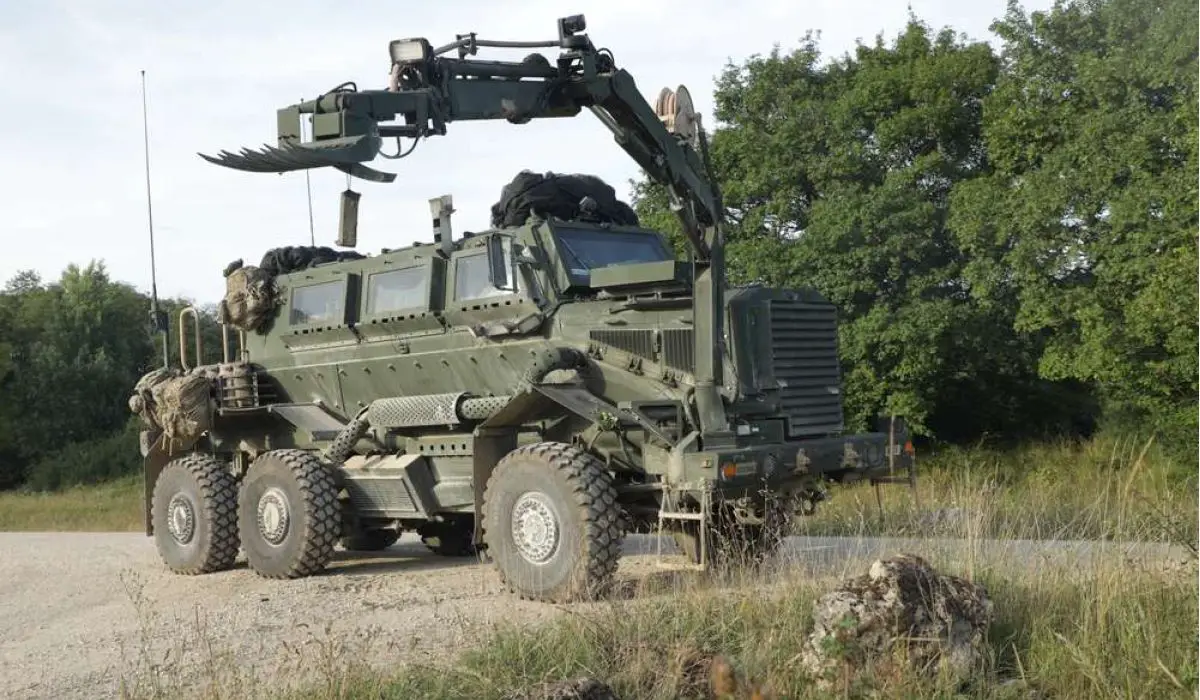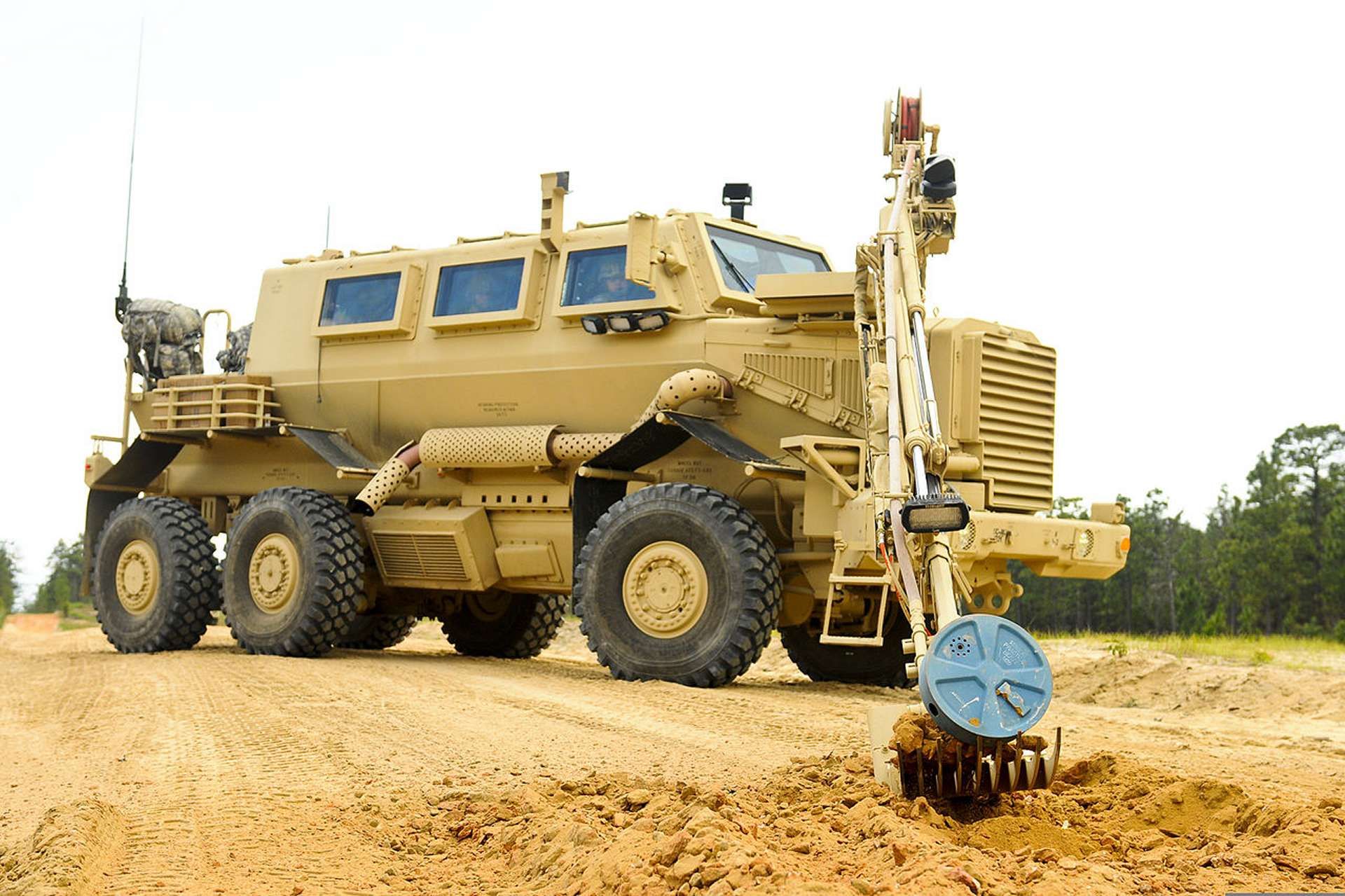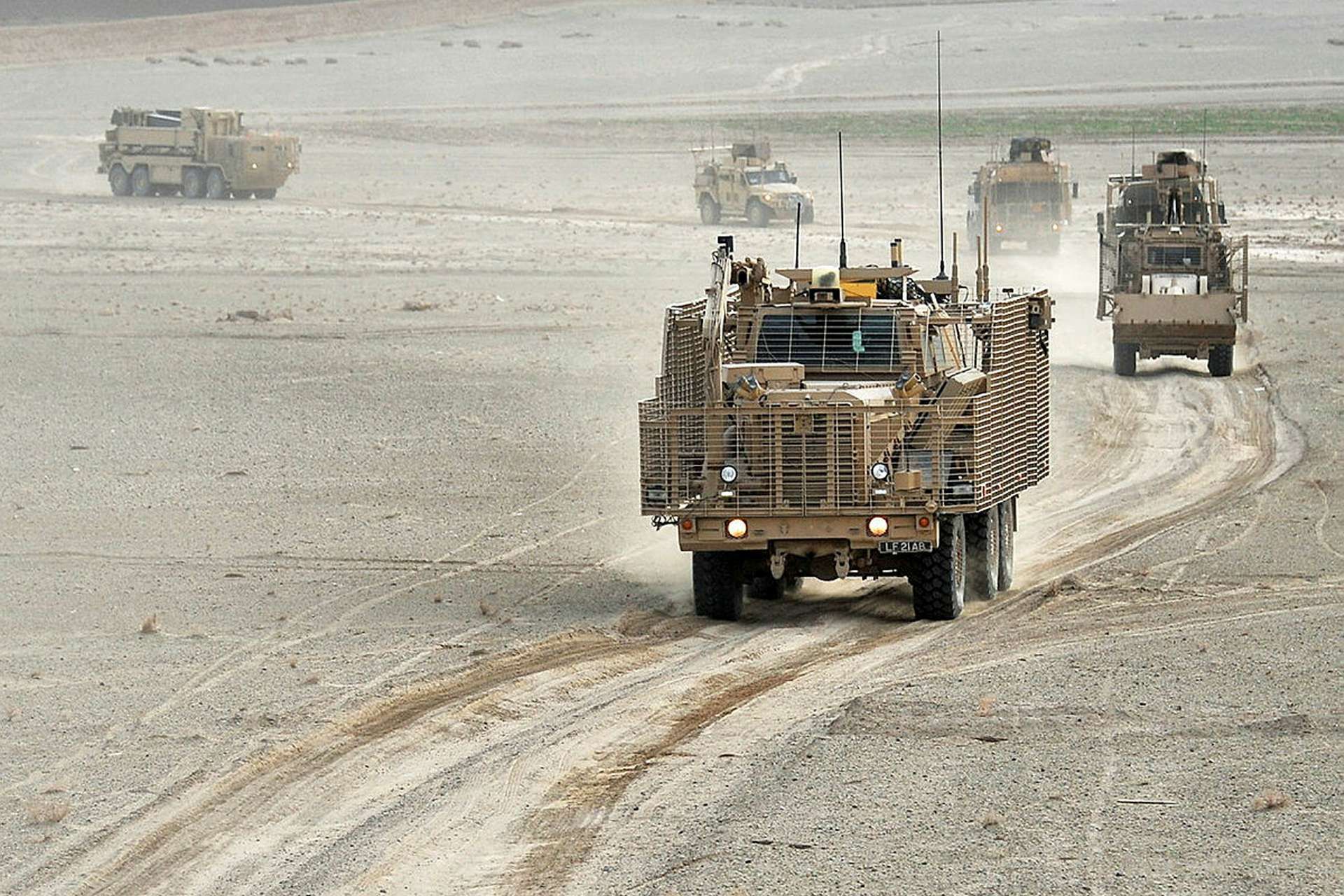Breaking News
Ukraine to procure US-made Buffalo Mine-Protected Vehicles for mine clearing operations.
On August 16, 2024, the Ministry of Defence of Ukraine codified and authorized the supply of the Buffalo Mine-Protected Vehicle (MPV), an armored engineering vehicle. This codification represents the conclusion of a formal evaluation process by the Ukrainian Ministry of Defense, aimed at ensuring that new vehicle models meet the necessary military standards, particularly in terms of mine and ambush protection. This process is essential for integrating such vehicles into the operational inventory of the Ukrainian Armed Forces and permits their purchase with state funds.
Follow Army Recognition on Google News at this link

The future supply of Buffalo MPVs is part of a broader strategy by Ukraine to enhance its military capabilities through the acquisition of Mine-Resistant Ambush-Protected (MRAP) vehicles from international allies. (Picture source: US DoD)
The Buffalo MPV is part of a broader strategy by Ukraine to enhance its military capabilities through the acquisition of Mine-Resistant Ambush-Protected (MRAP) vehicles from international allies. Ukraine has recently received and is expected to receive significant numbers of MRAPs, with the United States and Canada being key suppliers. The United States has provided multiple batches of MRAPs, including MaxxPro and Cougar models, as part of its military assistance to Ukraine.
A recent $625 million aid package from the U.S. included a pledge of 200 MaxxPro MRAPs to support Ukrainian forces in navigating heavily mined areas, particularly in the southern and eastern regions of the conflict. Canada has supplied over 1,000 Senator MRAPs, which have been deployed on the battlefield and have demonstrated their effectiveness in protecting personnel from mine blasts. These deliveries are part of ongoing efforts by Ukraine’s Western allies to support its military operations.
MRAP vehicles, including those now being integrated by Ukraine, were developed in response to the threats posed by improvised explosive devices (IEDs) during the Iraq War. However, the concept of MRAPs can be traced back to earlier conflicts, such as the Rhodesian Bush War and the South African Border War, where the need to counter landmines and similar threats led to the development of vehicles with V-shaped hulls. These designs were intended to deflect blast energy away from the occupants. The U.S. Department of Defense accelerated the development and deployment of MRAPs in the mid-2000s, particularly during the Iraq and Afghanistan conflicts, to protect military personnel from IEDs and landmines.

Since the start of the Russian invasion in 2022, the United States has provided multiple batches of MRAPs, including MaxxPro and Cougar models, as part of its military assistance to Ukraine. (Picture source: Ukrainian 41st Separate Mechanized Brigade)
MRAPs are characterized by their V-shaped hulls and reinforced armor, designed to protect against IEDs, landmines, and small arms fire. These vehicles come in various categories, tailored to different operational requirements. For example, lighter Category I MRAPs, such as the Navistar MaxxPro, are used in urban operations, while heavier Category II and III vehicles, like the Cougar HE and Buffalo, are designed for convoy escort and mine-clearing operations.
Another variant, the MRAP-All Terrain Vehicle (M-ATV), is optimized for rough terrains. Several countries have developed their versions of MRAPs, including the British Ocelot and Turkish Kirpi, indicating the global adoption of this technology. Despite their protective features, MRAPs face operational challenges, such as limited maneuverability in confined spaces and a higher risk of rollovers due to their top-heavy design.
The Buffalo MPV, recently codified by Ukraine, is specifically designed to withstand blasts from landmines and IEDs. Developed by the US company Force Protection Inc., later acquired by General Dynamics, the Buffalo's design incorporates elements from the South African Casspir, a vehicle known for its mine protection capabilities. The Buffalo’s V-shaped hull is a key feature, designed to deflect the force of explosions away from the vehicle’s occupants.

The Buffalo MPV is equipped with a 9.1-meter-long articulated arm for handling and disposing of explosives, which can be operated remotely from within the vehicle, enhancing crew safety during bomb disposal operations. (Picture source: US Army)
The Buffalo MPV is built on a chassis originally derived from the Mack ASET AI-400 truck platform, which supports its protective features. It is a 6x6 wheeled vehicle with a diesel engine and automatic transmission, enabling it to operate in challenging terrains and carry heavy loads. These characteristics make it suitable for tasks such as route clearance and explosive ordnance disposal (EOD).
Since its introduction in 2003, the Buffalo MPV has been used in various conflict zones. The U.S. Army Corps of Engineers was among its early users in Afghanistan, where it was employed to clear roads of IEDs. The vehicle’s deployment expanded during the Iraq War, with over 600 units delivered by 2009 to several countries, including Canada, the United Kingdom, and France.
The Buffalo MPV measures approximately 8.2 meters in length, 2.6 meters in width, and 4 meters in height, with a curb weight exceeding 18,140 kilograms. It is powered by a Caterpillar C13 12.5-liter engine in the Buffalo A2 variant, producing 328 to 336 kilowatts (440 to 450 horsepower). The vehicle can reach speeds of up to 105 kilometers per hour and has a range of about 480 kilometers. While its armament is typically minimal, the Buffalo is primarily used for protection and support rather than direct combat.
The Buffalo MPV’s defensive features include heavy armor that provides protection against 7.62mm ammunition and rocket-propelled grenades (RPGs), as well as its V-shaped hull designed to reduce the impact of blasts. Additionally, the vehicle is equipped with a 9.1-meter-long articulated arm for handling and disposing of explosives, which can be operated remotely from within the vehicle, enhancing crew safety during bomb disposal operations.

The Buffalo’s deployment expanded during the Iraq War, with over 600 units delivered by 2009 to several countries, including Canada, the United Kingdom, and France. (Picture source: British MoD)


























